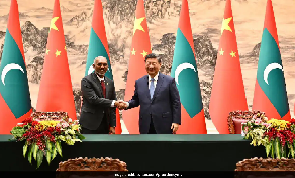Aditya Gowdara Shivamurthy
On January 1, 2025, the Maldives finally implemented its free trade agreement (FTA) with China after it came into being seven years ago. The opposition then was very critical of the agreement as it was rushed through parliament without much debate. India voiced its concerns, fearing the FTA would allow Chinese goods into Indian markets. As China continues its talks with Bangladesh and Sri Lanka about similar agreements, India needs a coherent economic strategy to engage with its neighbours.
South Asian countries, having embraced economic nationalism and protectionist policies, have cautiously opened their economies to regional trade. The India-Sri Lanka Free Trade Agreement (ISFTA) was implemented in 2000, followed by the South Asian Free Trade Agreement (SAFTA) in 2006. However, factors such as protectionism, similar production bases, para-tariffs, non-tariff barriers, inadequate infrastructure, high logistics costs, and political distrust have limited the effectiveness of these agreements. Other regional initiatives, such as the BIMSTEC free trade agreement, have also been delayed, with negotiations dragging on for years. As a result, South Asia remains one of the least connected regions in the world, with regional trade accounting for less than 5% of its global trade.
China Is Competing For Influence
In contrast, China has emerged as a major trading partner in the region, competing with India’s traditional economic influence. China signed an FTA with Pakistan in 2006, and over time, it has increased investments and trade linkages with India’s smaller neighbours, becoming one of their top trade partners. Well-established supply chains, distinct manufacturing bases, production capacities, and cheap goods have facilitated China’s economic expansion, aligning with its geopolitical and geo-economic ambitions. Following the launch of the Belt and Road Initiative (BRI), China offered to sign FTAs with the Maldives, Sri Lanka, and Bangladesh. For Beijing, these agreements would help promote cheaper exports, expedite BRI projects, and create economic leverage.
Among South Asian countries, there is a growing demand to expand economic engagements to address structural issues. They view FTAs as an opportunity to access cheap goods, reduce import costs, boost exports and local manufacturing and alleviate pressure on foreign reserves. For instance, the Maldives has limited production capacity, faces rising import costs, and struggles with low foreign reserves. Bangladesh is set to graduate from its least-developed country status in 2026, which will result in the loss of preferential access to global markets. After experiencing an economic crisis, Sri Lanka is also eager to expand its economic engagements, seeing them as vital to its recovery. Bangladesh and Sri Lanka are negotiating FTAs with China and have expressed interest in joining the China-led Regional Comprehensive Economic Partnership (RCEP).
India Should Make Use Of Momentum
These countries have also expressed a strong interest in deeper economic integration with India, hoping to benefit from its economic growth and ascent. In recent years, South Asia has seen a surge in land, maritime, waterways, air connectivity, and border infrastructure, as well as trade. For instance, the Maldives and Bangladesh are eager to negotiate an FTA with India, while Sri Lanka intends to upgrade its existing FTA to an Economic and Technology Cooperation Agreement (ETCA). On its part, India views these FTAs and connectivity efforts as a means to enhance its economic interdependence with its neighbours. India is currently working on over a hundred connectivity projects in the region, some of which are funded through concessional loans and grants.
However, India remains concerned about Chinese FTAs in the region. India fears that Chinese imports will flood South Asian markets, undermine local economies, and eventually replace Indian exports. Over the last two decades, India and China have been the top exporters to the Maldives, Sri Lanka, and Bangladesh, with trade steadily increasing. Between 2010 and 2022, India’s exports to Sri Lanka grew from $2.5 to $4.6 billion, to the Maldives from $126 million to $485 million, and to Bangladesh from $3.5 to $9.4 billion. However, this growth pales in comparison to China’s significant increase in exports to Sri Lanka ($1.2 billion to $3.5 billion), the Maldives (less than $60 million to $562 million), and Bangladesh (from $5.3 billion to $17.8 billion). This trend may further intensify with the implementation of the FTA with China.
Drop The Scepticism
Neither India nor China is among the top five export destinations for the Maldives and Bangladesh. This status quo could change if the FTAs with China are implemented. India also fears that if these FTAs are signed, cheap Chinese commodities could enter India via its connectivity projects and FTAs with neighbouring countries. This scepticism has led India to reportedly pause negotiations on the FTA with Bangladesh.
India’s concerns about Chinese FTAs appear to have come full circle. At a time when countries are eager to expand their economic engagements, India must tap into this momentum. New Delhi must realise that it can counter China’s economic advances in the neighbourhood only by proactively engaging its neighbours. Rather than pausing the FTAs, India must expedite negotiations, reduce protectionist measures, and open its markets to smaller countries. India’s strategy should focus on preventing Chinese goods from flooding its markets while simultaneously enhancing connectivity and trade with its neighbours.



